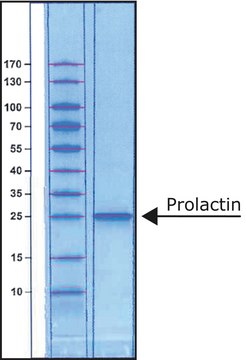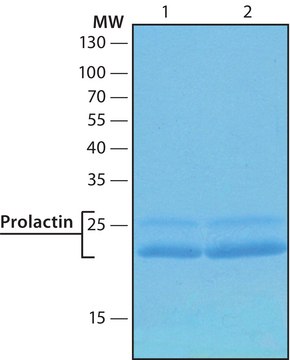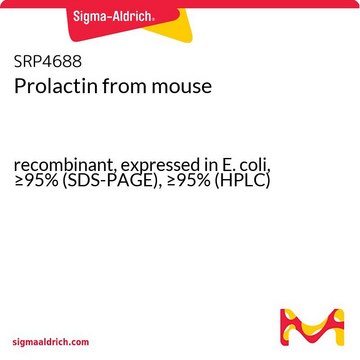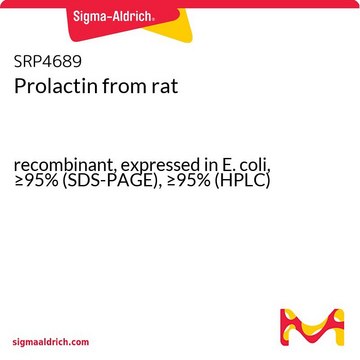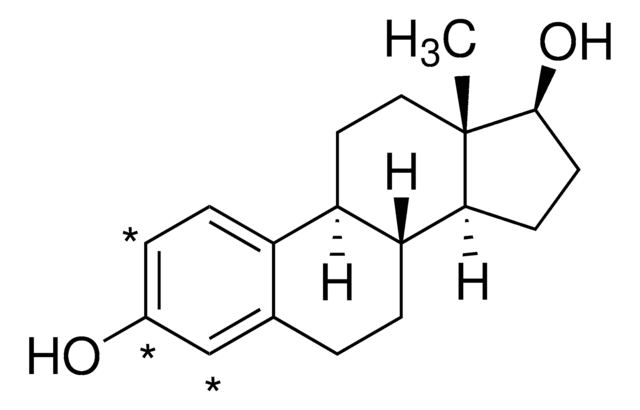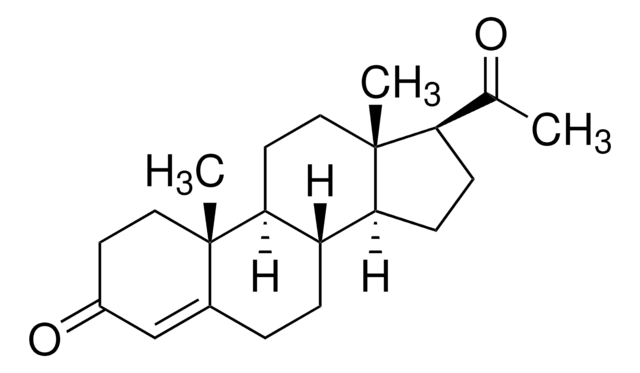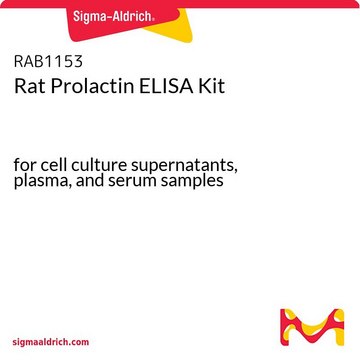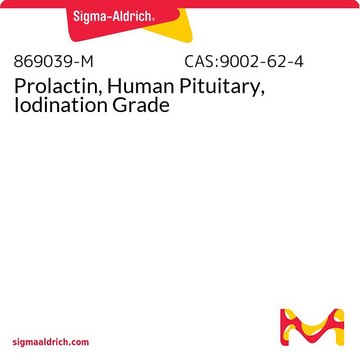L6520
Prolactin from sheep pituitary
20-50 IU/mg
Synonym(s):
LTH, Lactogenic hormone from ovine pituitary glands, Luteotropic Hormone, PRL
Sign Into View Organizational & Contract Pricing
All Photos(1)
About This Item
form:
powder
Recommended Products
form
powder
specific activity
20-50 IU/mg
solubility
water: 7 mg/mL, clear to slightly hazy, colorless to faintly yellow
UniProt accession no.
shipped in
ambient
storage temp.
2-8°C
Gene Information
sheep ... PRL(443317)
Looking for similar products? Visit Product Comparison Guide
Biochem/physiol Actions
Prolactin is a neuroendocrine hormone. The prolactin receptor is a transmembrane glycoprotein that belongs to the cytokine hematopoietic receptor family. A large number of cells and organs express the receptor, including B cells, T cells, macrophages, monocytes and neutrophils. Prolactin signal transduction involves the JAK/STAT families and the src kinase family. Induces lactation; inhibits secretion of gonadotropins; release is inhibited by dopamine.
Signal Word
Danger
Hazard Statements
Precautionary Statements
Hazard Classifications
Repr. 1B
Storage Class Code
6.1D - Non-combustible acute toxic Cat.3 / toxic hazardous materials or hazardous materials causing chronic effects
WGK
WGK 3
Flash Point(F)
Not applicable
Flash Point(C)
Not applicable
Personal Protective Equipment
dust mask type N95 (US), Eyeshields, Gloves
Regulatory Information
新产品
Choose from one of the most recent versions:
Already Own This Product?
Find documentation for the products that you have recently purchased in the Document Library.
Sharon R Ladyman et al.
eLife, 10 (2021-09-17)
As part of the maternal adaptations to pregnancy, mice show a rapid, profound reduction in voluntary running wheel activity (RWA) as soon as pregnancy is achieved. Here, we evaluate the hypothesis that prolactin, one of the first hormones to change
Jakub Sumbal et al.
Frontiers in cell and developmental biology, 8, 68-68 (2020-04-09)
Mammary gland development occurs mainly after birth and is composed of three successive stages: puberty, pregnancy and lactation, and involution. These developmental stages are associated with major tissue remodeling, including extensive changes in mammary epithelium, as well as surrounding stroma.
Narattaphol Charoenphandhu et al.
American journal of physiology. Endocrinology and metabolism, 297(3), E609-E619 (2009-07-02)
During pregnancy and lactation, the enhanced intestinal Ca(2+) absorption serves to provide Ca(2+) for fetal development and lactogenesis; however, the responsible hormone and its mechanisms remain elusive. We elucidated herein that prolactin (PRL) markedly stimulated the transcellular and paracellular Ca(2+)
Khalid Bajou et al.
Nature medicine, 20(7), 741-747 (2014-06-16)
The N-terminal fragment of prolactin (16K PRL) inhibits tumor growth by impairing angiogenesis, but the underlying mechanisms are unknown. Here, we found that 16K PRL binds the fibrinolytic inhibitor plasminogen activator inhibitor-1 (PAI-1), which is known to contextually promote tumor
Xinyan Cao et al.
International journal of molecular sciences, 20(9) (2019-05-01)
Embryo implantation in the mink follows the pattern of many carnivores, in that preimplantation embryo diapause occurs in every gestation. Details of the gene expression and regulatory networks that terminate embryo diapause remain poorly understood. Illumina RNA-Seq was used to
Our team of scientists has experience in all areas of research including Life Science, Material Science, Chemical Synthesis, Chromatography, Analytical and many others.
Contact Technical Service